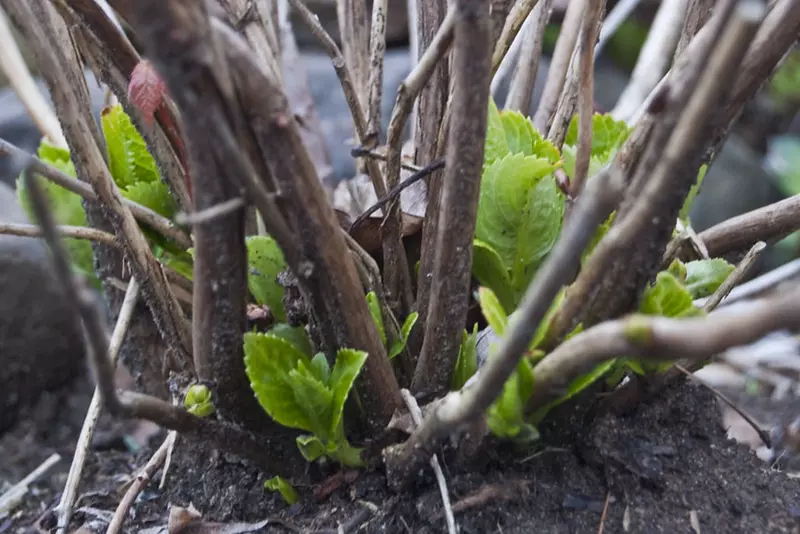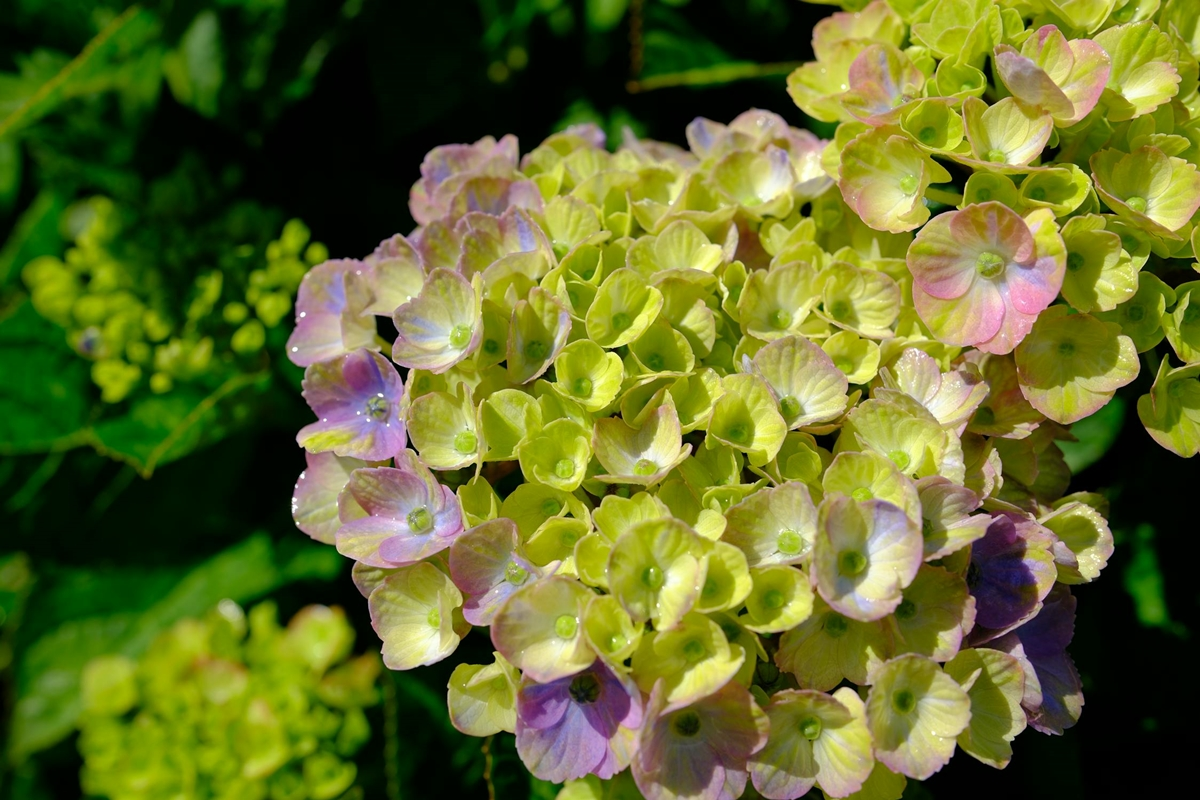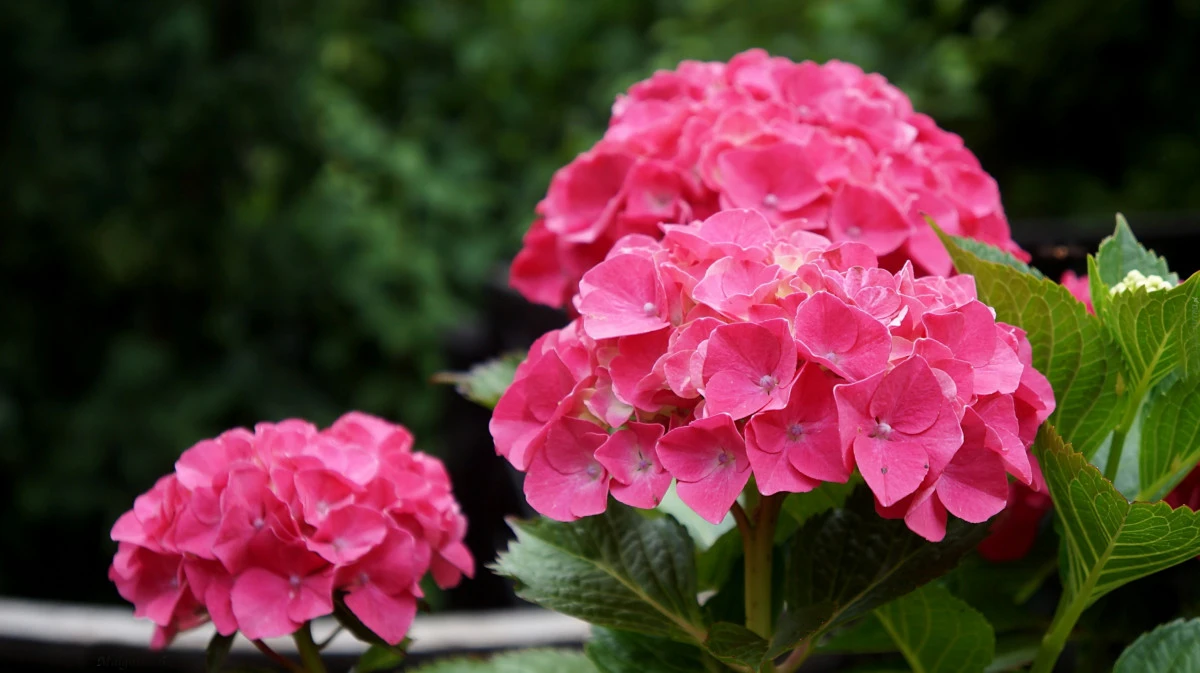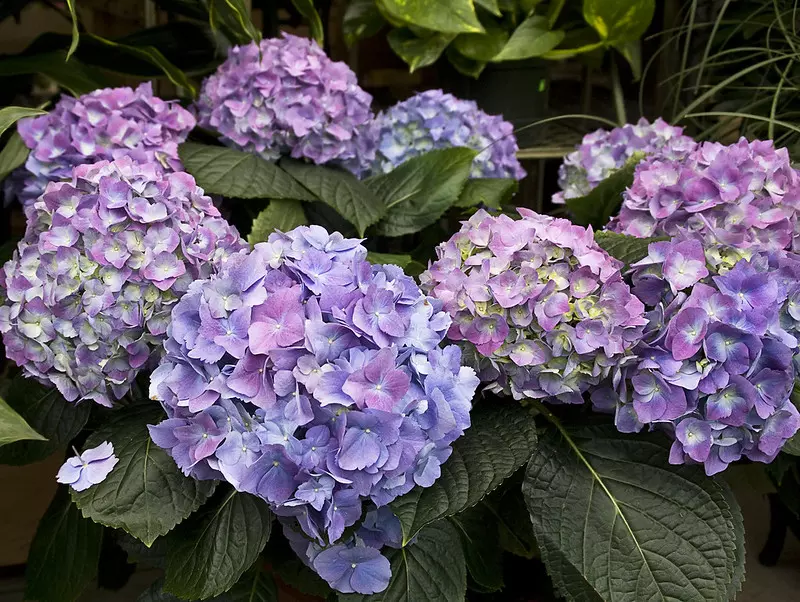
Why Prune Hydrangeas in Spring?
Learn when and how to prune your hydrangeas this spring with our detailed guide. Includes tips for tool preparation and proper pruning techniques.
Read MoreHydrangeas thrive in the unique climate of Wales, but proper care is essential to ensure vibrant blooms and healthy plants.

Wales' climate, characterised by mild temperatures and high rainfall, provides an ideal environment for hydrangeas. However, choosing the right variety is crucial to ensure healthy growth and abundant blooms.
The Welsh climate is predominantly temperate maritime, meaning that winters are mild, summers are cool, and rainfall is frequent throughout the year. This creates excellent conditions for hydrangeas, but it also presents some challenges:
Not all hydrangea varieties thrive equally well in Wales' climate. The following types are best suited to Welsh gardens:
One of the most popular hydrangeas in the UK, Hydrangea macrophylla is highly suited to the damp and mild conditions of Wales. It produces large, mophead or lacecap blooms in shades of blue, pink, or purple, depending on soil pH.
Unlike Hydrangea macrophylla, which prefers shade, Hydrangea paniculata is more tolerant of full sun and drier conditions. It produces large, cone-shaped flower heads that start off creamy white and gradually turn pink as they mature.
Hydrangea arborescens is an excellent choice for gardens with heavy rainfall, as it can tolerate wetter soil conditions better than most other hydrangea types. It produces large, rounded blooms that are typically white or pale green.
Less commonly grown in the UK, but an excellent choice for Welsh gardens, Hydrangea quercifolia offers year-round interest with its deeply lobed leaves, which turn stunning shades of red and orange in autumn.
When selecting a hydrangea for your Welsh garden, consider the following:
By selecting the right hydrangea variety for your garden’s specific conditions, you can enjoy healthy, vibrant blooms throughout the growing season. Whether you prefer the classic beauty of H. macrophylla or the hardy elegance of H. paniculata, Wales offers the perfect climate to make your hydrangeas thrive.

Choosing the right location is essential for healthy hydrangea growth in Wales. While hydrangeas are adaptable, their performance depends greatly on light exposure, soil moisture, and protection from extreme weather conditions.
Most hydrangeas thrive in partial shade, where they receive morning sunlight followed by afternoon shade. This balance helps prevent excessive moisture loss and reduces the risk of leaf scorch.
However, certain varieties can tolerate full sun if soil moisture is maintained. In Wales, where rainfall is abundant, hydrangeas in sunny spots can still flourish as long as the soil does not dry out completely during dry periods.
Wales’ climate varies by region, influencing the best placement for hydrangeas:
Hydrangeas thrive in moist, well-draining soil. While Wales receives high rainfall, it is still important to ensure that the soil retains moisture without becoming waterlogged.
Although Wales has a mild climate, extreme weather events like late frosts or heavy winter rains can impact hydrangeas.
For the best results, plant hydrangeas in partial shade with protection from strong winds and well-draining, moisture-retentive soil. In full sun locations, ensure that the soil stays consistently moist. By selecting the right spot, your hydrangeas will thrive and produce vibrant, healthy blooms year after year.
Soil composition plays a crucial role in the health and appearance of hydrangeas. In Wales, the soil is frequently acidic, especially in western coastal areas and mountainous regions. This natural acidity can significantly affect hydrangea growth, bloom colour, and overall plant health.
Wales' geology contributes to its naturally acidic soil. The country has a high proportion of slate, sandstone, and shale-based soils, particularly in Snowdonia, Pembrokeshire, and the Brecon Beacons. These soil types tend to have a lower pH, which influences hydrangea development.
The pH level of soil directly determines the colour of Hydrangea macrophylla and Hydrangea serrata blooms:
Since much of Wales has naturally acidic soil, hydrangeas often bloom in shades of blue. Gardeners wishing to maintain or enhance blue blooms should avoid applying lime-based fertilisers, as these raise soil pH.
For gardeners who want to manipulate hydrangea colours, soil pH can be adjusted with targeted amendments:
Beyond pH levels, soil structure is crucial for robust hydrangea growth. Hydrangeas prefer soil that is rich, moisture-retentive, and well-draining.
Wales’ naturally acidic soil is ideal for blue-flowering hydrangeas but may require pH adjustments for pink blooms. To ensure healthy plants, improve drainage, enrich soil with organic matter, and monitor pH levels regularly. By managing soil conditions effectively, gardeners can enjoy vibrant hydrangeas that thrive in Welsh gardens.
Wales' temperate maritime climate provides high annual rainfall, reducing the risk of drought stress for hydrangeas. However, periods of dry weather can still occur, particularly in late spring and summer, making proper watering practices essential.
Wales experiences an average annual rainfall of 1,100 - 3,000 mm, with the wettest regions being Snowdonia and western coastal areas. While this generally ensures adequate soil moisture, prolonged wet conditions can pose risks such as:
Conversely, inland regions and areas with free-draining soils may dry out more quickly, especially during warmer months.
To maintain healthy growth and consistent blooms, it's important to adapt your watering routine to match seasonal and regional variations.
Most hydrangeas enter dormancy during winter, requiring little to no watering. In Wales, heavy rainfall is common, so ensure proper drainage to prevent waterlogging.
As temperatures rise, hydrangeas begin their active growth phase. Monitor new shoots, as dry spells can occasionally occur.
Though summers in Wales are generally mild, some areas experience dry spells, particularly in eastern Wales. Mulching helps retain soil moisture and reduce watering frequency.
Gradually reduce watering as temperatures cool. Overwatering in autumn can encourage soft growth, which is vulnerable to frost damage.
Overwatering is a common issue in Wales, particularly in areas with clay-heavy soil. To avoid problems:
While Wales' frequent rainfall generally meets hydrangeas' moisture needs, dry spells still occur, making occasional watering necessary. Gardeners should adjust their watering practices based on season, soil type, and location to prevent both drought stress and overwatering issues. By following these guidelines, hydrangeas will flourish, producing healthy foliage and abundant blooms year after year.
Proper pruning is essential for maintaining the health, shape, and blooming potential of hydrangeas. However, the correct timing and method depend on the hydrangea variety. Pruning at the wrong time can result in fewer flowers, while correct pruning encourages strong growth and abundant blooms.
Hydrangeas benefit from regular pruning for several reasons:
The timing of pruning is crucial, as different hydrangea species bloom on either old or new wood. Cutting back at the wrong time may remove next season’s flower buds.
Some hydrangeas set their flower buds on the previous year's growth, meaning heavy pruning in winter or early spring can remove the next season’s flowers. Instead, these should be pruned immediately after blooming in late summer or early autumn.
These hydrangeas form their flower buds on new growth, so they can be pruned more aggressively in late winter or early spring without affecting flowering.
Using the right technique ensures healthy regrowth and prevents unnecessary stress on the plant.
In my experience, pruning hydrangeas too early in Wales can be a mistake due to unpredictable late frosts. I once pruned a mophead hydrangea in February, only to see new shoots damaged by an unexpected cold snap. Since then, I always wait until after the risk of frost has passed.
Personally, I find that light pruning throughout the season works best, rather than cutting back everything at once. Removing spent blooms in summer and tidying up in early spring keeps my hydrangeas looking their best without sacrificing too many flowers.
Pruning hydrangeas correctly ensures healthy plants and abundant flowers. The key is knowing whether your hydrangea blooms on old or new wood and adjusting your pruning schedule accordingly. By using the right techniques and avoiding common mistakes, your hydrangeas will thrive and reward you with beautiful blooms year after year.
Although Wales has a relatively mild climate, sudden frosts in late autumn, winter, and early spring can damage hydrangeas. Frost can kill new growth, weaken stems, and reduce flowering potential for the following season.
Frost is most common in **inland and higher-altitude areas**, such as the Brecon Beacons and Snowdonia, where temperatures can drop significantly at night. Coastal areas, such as Pembrokeshire and the Vale of Glamorgan, experience milder winters, but even here, occasional cold snaps can occur.
Not all hydrangea species are equally vulnerable to frost. Understanding their resilience helps determine the best protection strategy.
Proper winter care ensures that hydrangeas survive harsh weather and bloom successfully in the following season.
Frost damage can severely impact hydrangeas in Wales, but with the right precautions, plants can thrive despite cold spells. Applying mulch, using protective covers, and choosing sheltered planting locations are the best ways to ensure healthy blooms in the next season. By following these steps, gardeners can prevent frost-related stress and enjoy vibrant hydrangeas year after year.
Spring (March - May) or autumn (September - November) are ideal for planting hydrangeas in Wales. These seasons provide mild temperatures and consistent rainfall, helping roots establish before extreme heat or frost.
Yes, hydrangeas thrive in Wales due to the mild, wet climate. However, proper site selection and soil preparation are crucial for optimal growth.
Hydrangea macrophylla (Mophead & Lacecap), Hydrangea paniculata, and Hydrangea arborescens are well-suited to the Welsh climate. Macrophylla varieties prefer partial shade, while Paniculata can tolerate full sun.
Most hydrangeas prefer partial shade, especially in southern and coastal regions where the sun can be stronger. Panicle hydrangeas (Hydrangea paniculata) can tolerate full sun, provided they receive adequate moisture.
Hydrangeas generally thrive in Wales’ wet conditions, but excessive rain can lead to root rot if drainage is poor. Planting in raised beds or improving soil drainage with organic matter can help.
Since Wales experiences frequent rainfall, additional watering is rarely needed. However, during dry spells, water deeply once or twice a week, especially for newly planted hydrangeas.
Hydrangeas prefer moist, well-draining soil rich in organic matter. Many parts of Wales have naturally acidic soil, which helps produce blue flowers in Hydrangea macrophylla.
To encourage blue flowers, lower the soil pH (make it more acidic) by adding aluminium sulfate or pine needle mulch. To get pink flowers, raise the pH with garden lime.
Yes, feeding hydrangeas in early spring and again in mid-summer with a balanced, slow-release fertiliser helps promote healthy growth and abundant blooms.
Mophead & Lacecap Hydrangeas: Prune lightly after flowering in late summer. Panicle & Smooth Hydrangeas: Prune hard in late winter or early spring to encourage strong new growth.
Yes, but flower buds on Hydrangea macrophylla can be damaged by frost. Applying mulch in winter and covering plants with fleece during cold snaps can help protect them.
Yellowing leaves can indicate overwatering, poor drainage, or a nutrient deficiency. Ensure the soil drains well and apply a balanced fertiliser if necessary.
Wilting can be due to heat stress, dry soil, or root damage. Water deeply during dry spells and ensure plants are shaded from the afternoon sun.
Yes, but strong winds and salt exposure can cause damage. Planting in a sheltered spot or using windbreaks will help protect them.
Hydrangeas are not fully deer-resistant. If deer are a problem, use natural repellents or protective fencing.
With proper care, hydrangeas can live for decades. Regular pruning, fertilisation, and proper watering help ensure longevity.
Yes, compact varieties like Hydrangea macrophylla and Hydrangea serrata grow well in containers. Use moisture-retentive, well-draining soil and water regularly.
Poor flowering can be caused by improper pruning, excessive shade, nutrient imbalance, or frost damage to buds. Identifying the cause can help restore blooming.
Hydrangeas can be grown indoors temporarily but prefer outdoor conditions. Keep them in bright, indirect light and move them outside after flowering.
Yes, hydrangeas contain compounds that can be toxic to dogs, cats, and horses if ingested in large quantities. Keep pets away from hydrangea plants.

Learn when and how to prune your hydrangeas this spring with our detailed guide. Includes tips for tool preparation and proper pruning techniques.
Read More
Discover the top hydrangea specialists across the United Kingdom, offering a diverse range of varieties and expert advice.
Read More
Learn how to propagate Hydrangea macrophylla with our quick guide. Discover step-by-step methods for softwood, semi-ripe, and hardwood cuttings to grow healthy plants.
Read More